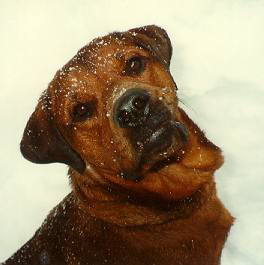Ch 5: Adult Dog Training (2 years+)

As dogs mature, they develop many doggy interests that may compete with dog training. For example, dogs may find that sniffing the grass, playing with other dogs and chasing squirrels are all much more exciting than listening to their owners and following repetitive instructions — come, sit, down, heel, sit, heel, sit, etc. Puppy training techniques begin to fail, environmental stimulation causes sensory overload and many dogs become hyperactive or reactive to other dogs and people. Owners become frustrated by the dog’s hyperactivity and inattentiveness and the relationship starts to go downhill.
Unless regularly given the opportunity to explore new surroundings and meet unfamiliar people and dogs, as dogs grow older, they become less accepting of their environment. Older dogs become more wary of the world in general and especially of strange, scary and unfamiliar stimuli. Make sure you give your adult dog plenty of time to adjust to new situations and employ classical conditioning to build positive associations when introducing dogs to new experiences or people.
The very first item on the agenda is to learn to control your dog’s rambunctiousness and rumbustiousness. A very successful training ploy is to “put behavior problems on cue” — to train the dog to bounce and bark on command, as in the Jazz-up & Settle Down and the Woof/Shush exercises. Then, the problem, which worked against training, now becomes an enjoyable game — a reward to use while training. Classical conditioning has an additional calming effect by teaching the dog to form positive associations with the physical and social environment. However, the success of adult dog training depends on the magical All-or-None Reward Training techniques.
All-or-none reward training techniques are easy, simple and extremely effective. The techniques have similarities to clicker training in that no commands are given and the dogs are neither lured nor prompted. However, all-or-none reward training is much quicker than clicker training since shaping is unnecessary. Within just a few minutes, without giving a single instruction, your dog will learn to pay attention, sit stay and to walk calmly on leash. And once all-or-none reward training techniques give you back your dog’s attention, you can go back to using the lightning-fast, lure/reward training techniques that you used with your puppy.
Important
To fast-track your adult dog’s re-education, make sure that you do not waste potential training rewards by feeding your dog from a bowl. Instead, each morning, weigh out your dog’s daily ration of kibble and place it in a container. Throughout the course of the day, you may handfeed every piece of kibble as a reward for good behavior.




